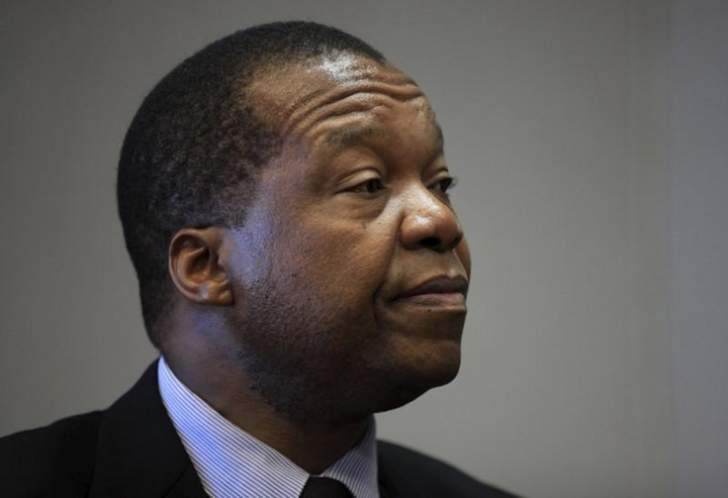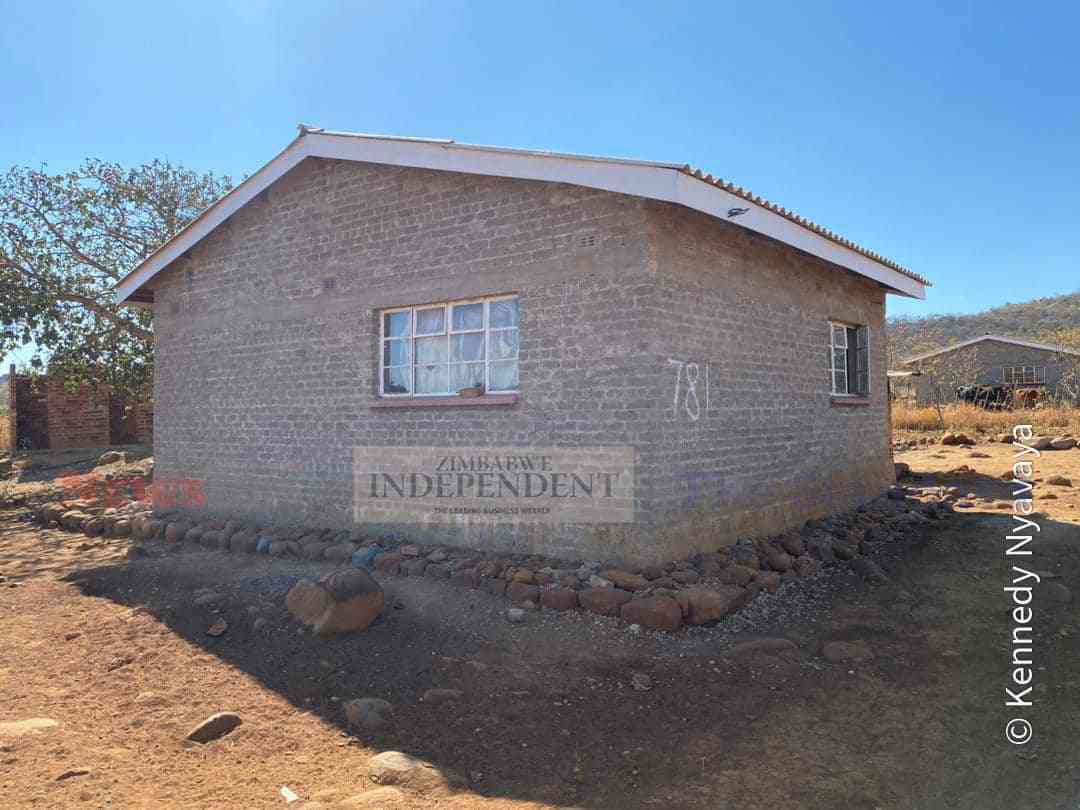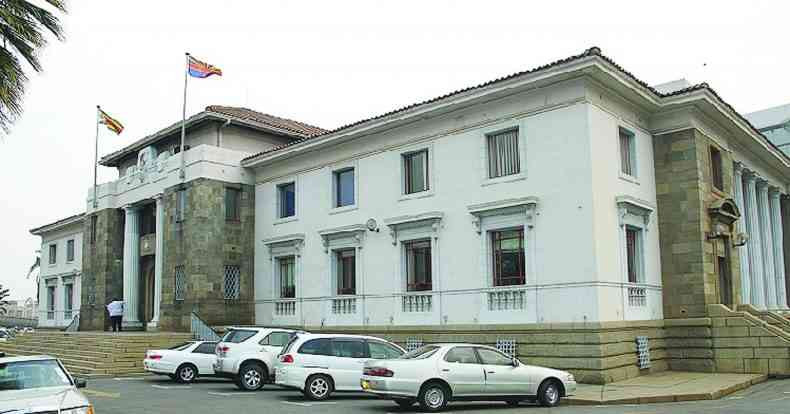
The year 2022 was a period of volatility starting with the United States dollar rate on the parallel market flactuating significantly and having a major impact on the pricing of goods and services and the purchasing power of the Zimbabwe dollar.
This put a lot of salaried workers out of pocket while consumers had to face continually increasing prices.
This was addressed by the Reserve Bank of Zimbabwe (RBZ), which had to close banking for a few days in order to arrest the situation.
Things have since stabilised somewhat as the government reined in errant suppliers who were in fact they key drivers of increasing US dollar rates while the RBZ upped interest rates to 200% to stem speculative borrowing.
The auction did meet demand for productive foreign exchange capital but the build up of a backlog indicated inadequate supply in the formal banking system.
We also saw the launch of gold coins and this certainly mopped up excess RTGS funds and offered an alternative asset class for the store of value.
At the centre of all this is the RBZ govenor John Mangudya (JM) who spoke to economist Vince Musewe (VM) regarding his views on the state of the economy and prospects for 2023. Below are excerpts from the interview.
VM: John, 2022 was quite a year. What were your main achievements as a central bank?
- Mavhunga puts DeMbare into Chibuku quarterfinals
- Bulls to charge into Zimbabwe gold stocks
- Ndiraya concerned as goals dry up
- Letters: How solar power is transforming African farms
Keep Reading
JM: The year 2022 was a challenging one, not only for Zimbabwe, but globally as most central banks experienced renewed inflationary pressures caused by the Russia-Ukraine conflict.
This conflict caused some unexpected increases in energy and food prices, leading to rising inflation across the globe. The crisis saw many central banks across the world increasing policy interest rates to contain rising inflation.
Zimbabwe was not spared as the rising oil and food prices filtered into our domestic inflation, especially between April and July 2022.
The Bank responded with several bold measures to contain the rising inflation which had seemed to go out of hand.
The country’s major achievements in 2022 were as follows:
- Reversing the upward inflationary trajectory in the month-on-month inflation from a peak of 30.7% in June 2022 to 3.2% in October and to levels below 3% in November and December 2022;
- Reducing the parallel market exchange rate premium from above 140% in May 2022 to current levels of below 20%, which is consistent with the levels observed in most countries;
- Successfully rolling out gold coins as retail open market operations instrument and an alternative investment product for the store of value to the US dollar. The contribution of this instrument to the current stability cannot be overemphasised;
- Liberalising the exchange rate through the successful implementation of the willing-buyer willing-seller (WBWS) foreign currency trading mechanism as a benchmark for the auction system, which has continued to serve the country as an efficient allotment platform in a dual currency environment. The WBWS foreign currency trading platform is working well as a price discovery system, with the auction continuing to be a platform for gauging foreign currency demand and an efficient foreign currency allocation mechanism;
- Clearing the foreign exchange backlog and thus creating a platform for building reserves and enhancing confidence in the foreign exchange market;
- Sustaining the safety and soundness of the banking system as well as an efficient payment system. Banking sector deposits also continued to increase for both local currency and foreign currency, indicating improved confidence in the banking sector.
- Improving foreign currency generation in the economy as shown by the increase in foreign currency receipts to around US$12 billion by end of 2022, the highest ever, from averages of around US$6 billion witnessed during the dollarisation era;
- Gained milestones on Fintech innovation as shown by the increase in the number of Fintech products on the market. The Fintech regulatory sandbox has gone a long way in promoting innovation and avoiding major Fintech risks by ensuring that the new Fintech products undergo some tests and checks before being introduced onto the market;
- Achieving external sector sustainability as evidenced by sustained current account surpluses and robust generation of foreign currency receipts which have assisted in supporting exchange rate stability; and
- Created a strong platform for robust economic growth of 7.2% in 2021 and 4% in 2022, above the sub-Saharan African average growth rate of 3.6%.
VM: As a regulator what is the current status of the banking sector?
JM: The banking sector is safe and sound and continues to support the productive sectors of the economy, in line with the National Development Strategy 1. The sector is adequately capitalised with average capital adequacy and tier 1 ratios of 35,45% and 23,97%, respectively as at September 30, 2022. The sector is profitable and asset quality has remained satisfactory as reflected by a low average non-performing loans (NPLs) to total loans ratio of 1,41% as at September 30, 2022.
VM: Inflation has certainly come down, do you think this will be sustainable?
JM: The bank anticipates containing the month-on-month inflation below 3% for the next six months of 2022 and reducing it further to historical month-on-month averages of less than 2% thereafter.
This trajectory will see annual inflation falling below 40% at the end of 2023 and to single-digit levels by March 2024, thus giving us a monetary policy or inflation target horizon of 12 months.
In this context, the bank is staying the course of the current tight monetary policy stance to ensure that the obtaining disinflationary path is sustained.
VM: The US dollar rate has certainly been less volatile, especially in the second half of 2022. Is that the new normal going forward?
JM: The past drivers of significant exchange rate instability have correctly been identified and were mainly to do with forward pricing behaviour by business, especially by the suppliers of goods and services to government, market indiscipline and cost of money which was not consistent with the desired inflation path.
In this context, the stability in the US dollar rate is expected to continue under the current fiscal and monetary stance, wherein the government and the bank have committed to staying the course of a tight fiscal and monetary policy stance and continued insistence on value for money in government procurement processes.
The moderate currency depreciation being witnessed in the parallel market is mainly due to currency preference or value preservation purposes, which responds to the increase and decrease of money in the market.
As such the focus going forward will be on finding ways to sustainably preserve the value of the local currency to reduce appetite for holding the US dollar for store-of-value purposes.
The current efforts by the bank to stabilise inflation are the primary focus of achieving this complemented by value-preservative instruments such as the gold coin and interest-bearing instruments.
I can, therefore, confidently say that the stability in the foreign exchange market currently obtaining is the new normal going forward. It is durable.
VM: The business sector and others have been crying for more exchange rate liberalisation, what is your position on the matter?
JM: The adoption of the WBWS foreign exchange market was a bold step towards exchange rate liberalisation.
Further liberalisation measures will be done in a gradual approach, which is more preferred to a big bang approach given where we are coming from.
As indicated in the bank’s Monetary Policy Committee (MPC) press statement of December 2, 22022, the bank will further liberalise the foreign exchange market during this first quarter of 2023.
VM: You once mentioned a 10-year de-dollarisation plan. Is it working?
JM: The suggestion for a phased de-dollarisation process of at least five years was out of the realisation that de-dollarisation is a process, not an event as guided by empirical evidence of countries that have gone through a de-dollarisation process, such as Bolivia, Israel, Chile and Cuba, among others.
At the moment, we believe that the country has reached an optimal mix of currencies in the multi-currency basket and this arrangement is working well for the country.
The focus going forward will be to promote the use of local currency, necessary to foster export competitiveness and increase production and productivity across the economy.
Of late, we have witnessed increased demand for local currency, which is critical for moving towards the de-dollarisation process.
In addition, the deliberate policy stance by government that, certain transactions should be done exclusively in local currency will gradually assist in de-dollarising the economy.
De-dollarisation is critically dependent on price stability which leads to indifference between holding the local currency and the US dollar.
VM: Has the auction backlog been cleared now and if not, what is your plan?
JM: The bank has cleared the auction system backlog and there is no risk of creating another foreign currency backlog as the tight monetary and financial conditions have curtailed the demand for foreign currency in the auction system, particularly for speculative purposes.
Precisely, we have seen a significant drop in auction bid amounts from levels of around US$40 million per week to current levels of around US$15 million per week.
The savings from the auction envelope will enable the bank to support the sustained liberalisation of the WBWS foreign currency trading system through sales of foreign currency to authorised dealers as well as the building of foreign exchange reserves.
VM: The (International Monetary Fund) IMF in their latest report on Zimbabwe has recommended the phasing out of gold coins. What are your views on that?
JM: The IMF mission team to Zimbabwe did not fully appreciate the bank’s noble objective of introducing gold coins into the domestic economy.
They view the issuance of gold coins as tantamount to intervening in the foreign exchange market, thus depleting the foreign exchange reserves.
The bank, however, views the gold coins as an alternative product or asset to foreign currency in the economy’s dual currency system, hence a retail open market operations instrument for store of value and for mopping excess liquidity.
The use of gold coins for mopping excess liquidity is particularly important in the dual currency environment where the public has a choice of holding both the US dollar and local currency.
In such an environment, when the public prefers holding the US dollar and have less appetite to hold domestic currency-denominated assets, the use of gold as a liquidity-mopping instrument is more effective.
Thus, the bank views the gold coins as a necessary open market operations instrument if the economy continues with a dual currency environment and the uncertainty of losing value on domestic currency-denominated investments is perceived to be high.
Against this backdrop, the bank has no plans to withdraw the gold coins until such a time when there is a high preference by the public to hold domestic currency-denominated assets that can also be used as open market instruments for mopping liquidity.
VM: There is continuous mention of RBZ quasi-fiscal activities is this still the case and why?
JM: The mention of RBZ quasi-fiscal activities relates to legacy debt that was contracted by the bank in the past on behalf of government, which the government has taken over through the Finance Act No 7 of 2021.
Currently, the bank has not been conducting any quasi-fiscal activities and there are no plans to do so in the outlook period.
VM: Lending to the productive sector is key. What has been the result of the various credit lines to that sector?
JM: The bank has been supporting the productive sector through the Medium-term Bank Accommodation (MBA) facility over and above its use of moral suasion to encourage banks to lend to the productive sectors.
A cumulative $10,7 billion has been disbursed under the MBA facility to date at a lower interest rate of 100% compared to the Bank policy rate of 200%.
About 70% of bank lending is mainly to the productive sectors of the economy.
The credit support to the private sector together with the positive contribution of the foreign currency auction system towards supporting industry has resulted in improved production across the productive sectors.
Industry capacity utilisation, for example, improved to close to 60% in 2022 compared to 47% in 2020.
Total export receipts have also increased to a record high of about US$6,5 billion by November 2022 compared to US$5,1 billion same period in 2021.
The support to the manufacturing sector has also seen domestically produced goods significantly increasing and now account for over 70% of domestic retail sales.
VM: Access to capital for SMEs remains a challenge in Zimbabwe. What should be done?
JM: The bank has been supporting initiatives to promote the SMEs that are strategically important in contributing towards the country’s GDP, exports, employment, and poverty reduction.
Given the importance of the MSMEs sector, the bank launched Financial Inclusion Strategy Number 2 whose focus is to promote financial access and use by all economic players, including the previously marginalised players that include the youth, women, MSMEs and those in the rural areas and agricultural sector.
The bank has been supporting the productive sectors, inclusive of primary agriculture, agro-processing and small and medium enterprises, through the medium-term bank accommodation facility, which is accessed at concessional interest rates. Since its introduction, a total of $10.7 billion had been disbursed by November 2022.
Most of the disbursements went into the agriculture sector to finance both winter and summer cropping seasons.
This facility has largely benefited the agriculture sector, especially summer and winter cropping.
In addition, the bank continues to support MSMEs through concessionary interest rates to sustain their production. In addition, the Bank continues to cater for the foreign currency needs of the MSMEs through the auction system for SMEs.
VM: The collateral registry has now been operationalised, do you think it will have any impact?
JM: The collateral registry system was successfully launched on November 18, 2022.
The operationalisation of the collateral registry will enable members of the public to leverage on movable assets, which were considered as “dead capital” to access funding from financial institutions.
As such it will go a long way in enhancing access to finance especially by MSMEs which have traditionally failed to access loans from the banking sector due to lack of acceptable collateral.
VM: 2023 is an election year and there is always the fear of increased money supply. How do you intend to reign in the potential inflationary pressures which can emerge?
JM: The bank does not anticipate any abrupt shocks to the money supply emanating from unanticipated expenditure unless something extraordinary happens.
The bank and government will continue with the current liquidity management measures to ensure that the obtaining inflation and exchange rate stability are sustained through the election period.
The year 2023 is a year of stability and growth of the national economy.
VM: On the international development front, what has been the impact of Russia Ukraine war on the banking sector?
JM: The impact of the Russia-Ukraine conflict was minimal on the domestic banking sector as a result of limited trade and capital flows and financial linkages between Zimbabwe and Russia.
The conflict, however, contributed to inflationary pressures during the first half of 2022 which negatively impacted the import prices of raw materials, food and liquid fuels.
The impact on the banking sector was, therefore, indirect through domestic macro-financial linkages.
VM: What is the status of historical RBZ debt assumption?
JM: Government has put in place necessary legal instruments to assume all the blocked funds and the legacy debt that was contracted by the bank on its behalf.
VM: ZAMCO was a great success in managing NPLs. Should it not continue?
JM: ZAMCO (Zimbabwe Asset Management Company) was set up as a special purpose vehicle (SPV), with the sole mandate of taking over non-performing loans in the banking sector. The SPV was established to operate for a maximum of ten years, from 2014 to 2024. Having fulfilled its mandate ahead of time, ZAMCO is in the process of winding down. As such, the Bank has no appetite for creating another ZAMCO. We will do everything it takes to ensure that asset quality remains sound. We are happy that the level of non-performing loans in the banking sector has been below the international benchmark of 5% for over 4 years and the objective is to sustain this trajectory.
VM: On currency management, what are your plans going forward?
JM: The current focus of the Bank is to sustain the optimal mix of the currency basket which is at 60:40 for USD and ZWL and which is serving the country very well.
Going forward, the focus will be on ensuring value preservation for the local currency and promoting its use to increase its proportion in the dual currency basket.
VM: What are your priority areas for 2023?
JM: The bank’s priority areas for 2023 include sustaining the current price and exchange rate stability to foster economic growth. The Bank will seek to start building foreign currency reserves needed to back up the local currency taking advantage of Statutory Instrument (SI) 189 of 2022 and the reduced demand for foreign currency on the auction, which has fallen from more than US$40 million per auction in the past to the current amounts of less than US$15 million. The building of foreign currency reserves for the country will be based on export promotion and import substitution to ensure continued external sustainability.
The bank also plans to institute further measures to liberalise the foreign currency market in order to eliminate arbitrage and speculative opportunities in the market. The bank will seek to ensure an efficient foreign exchange market system that will promote seamless financing of critical imports.
The bank will also continue to ensure a smooth and efficient payment system as well as promote financial deepening to encourage savings through value preservation instruments in 2023. In addition, the bank will seek to continue promoting financial innovation through FINTECH initiatives and accelerating research toward digital currencies, particularly the adoption of a central bank digital currency.
Lastly, the bank will seek to continue implementing measures and policies for sustaining the use of the domestic currency; boost confidence in its use as part of the de-dollarisation process.
VM: What is your parting message to Zimbabweans?
JM: Price and financial system stability is the best contribution that the bank can offer to economic growth and the general well-being of the nation and hence at the center of the bank’s primary objectives. Sustaining the current price stability will go a long way in the preservation of wealth and increasing the country’s happiness index. Against this backdrop, the bank will do whatever it takes to safeguard price and financial system stability using all the policy levers under its purview.
I also want to assure the public that economic activity is robust and that the inflation outlook is positive. With the interventions that we have undertaken so far, we expect inflation to continue a downward path to below 40% by end of 2023.
The bank encourages the private sector to refrain from malpractices and speculative behaviour and adhere to responsible pricing. The support of the policies of government and the bank by the private sector is critical in achieving and sustaining the current stability in the economy.










